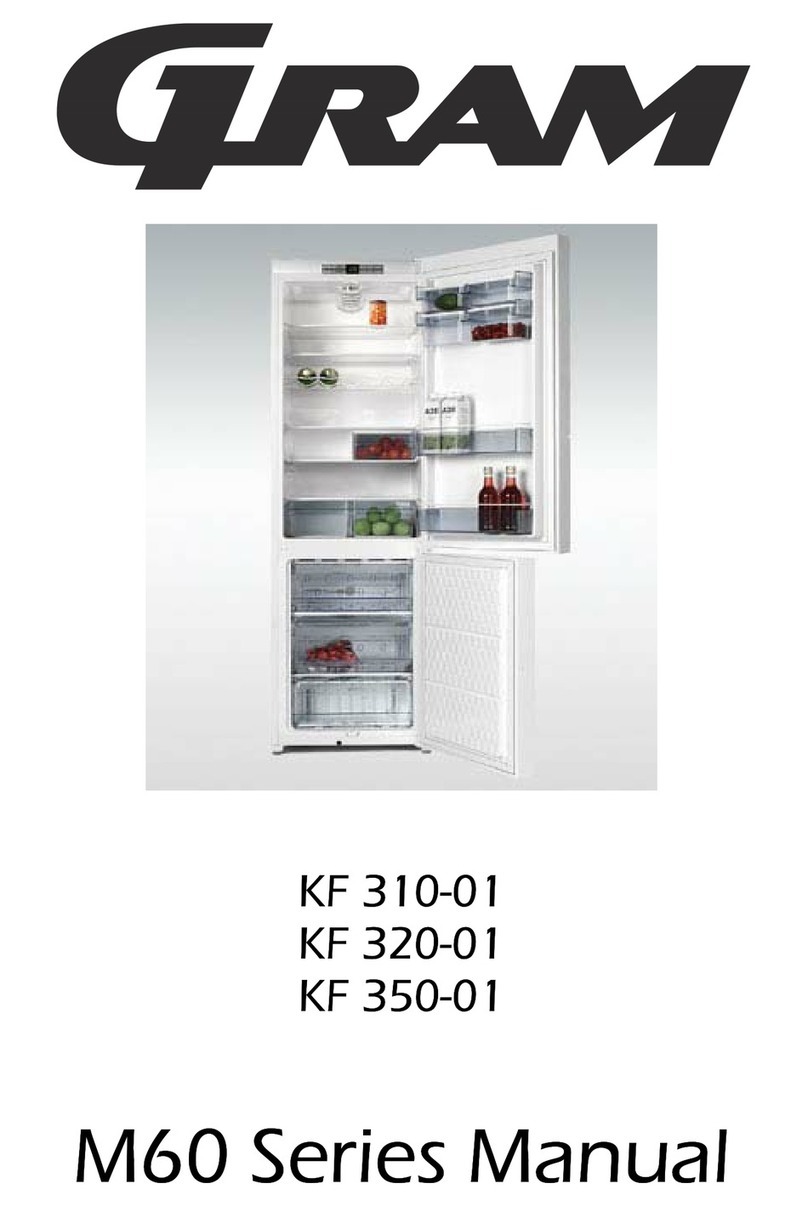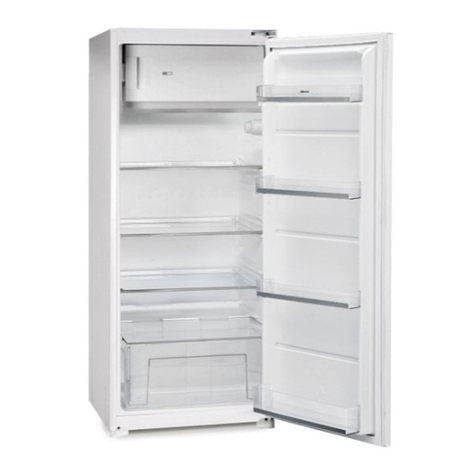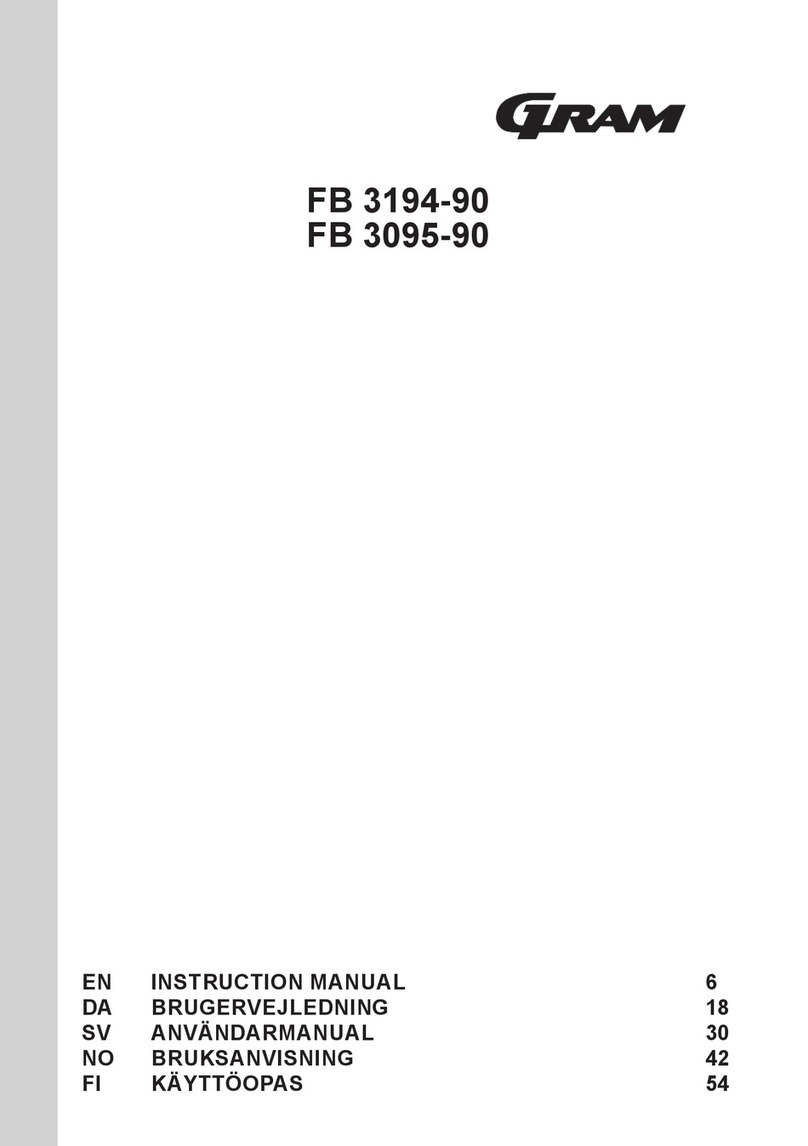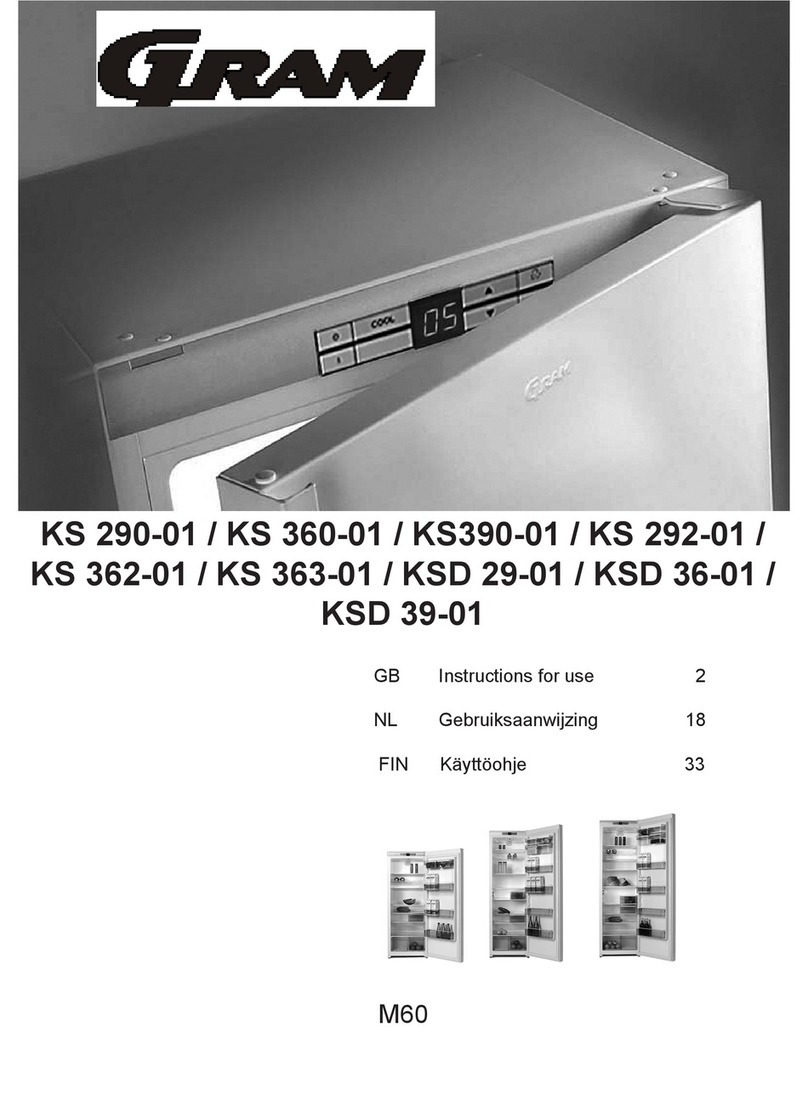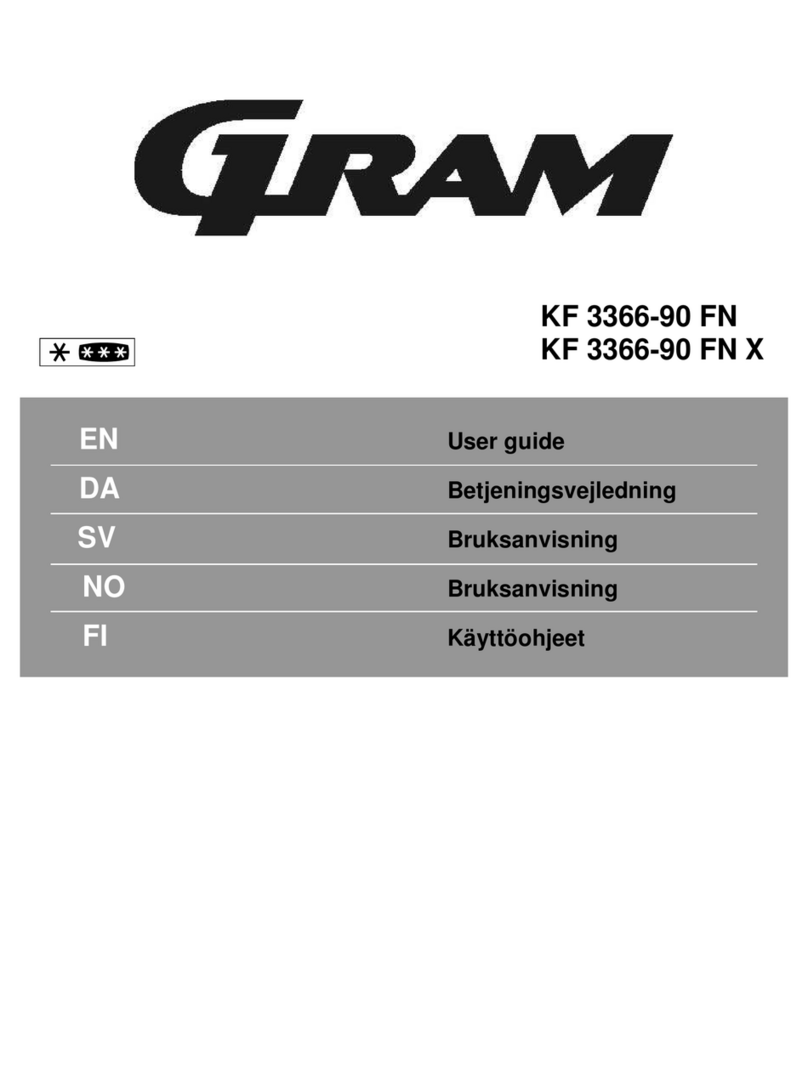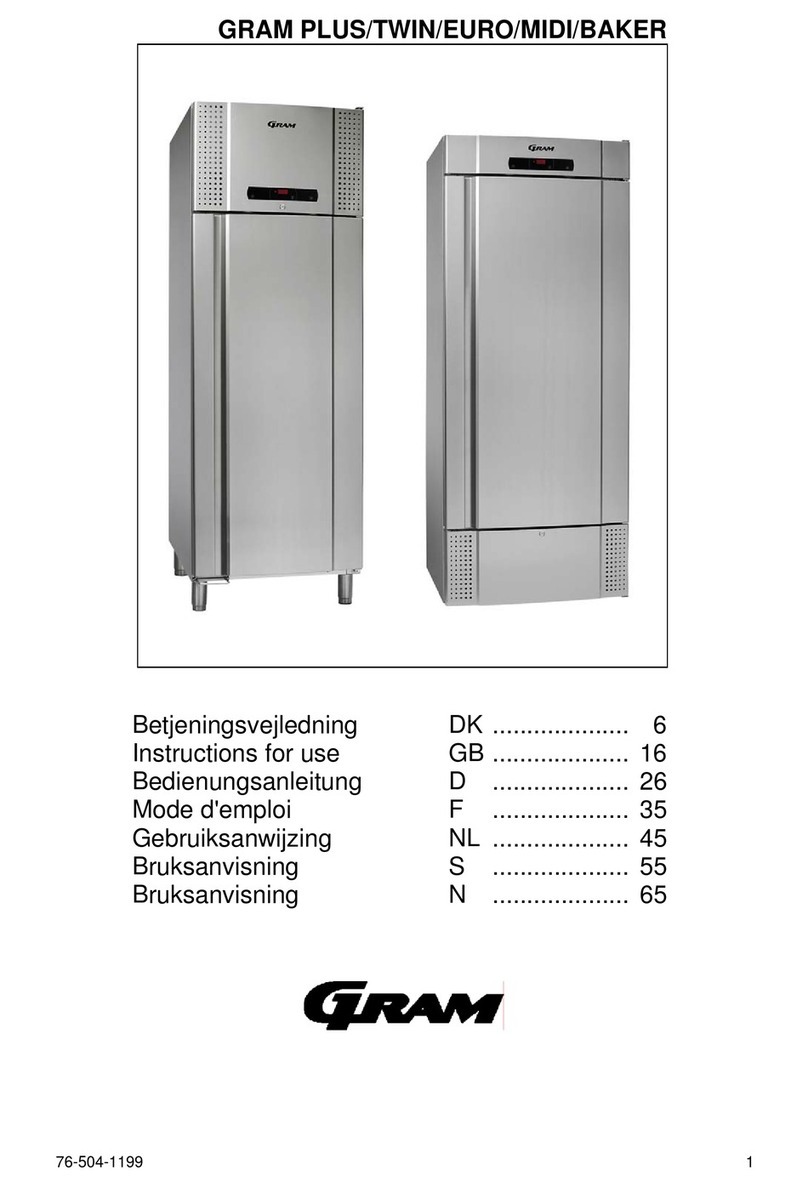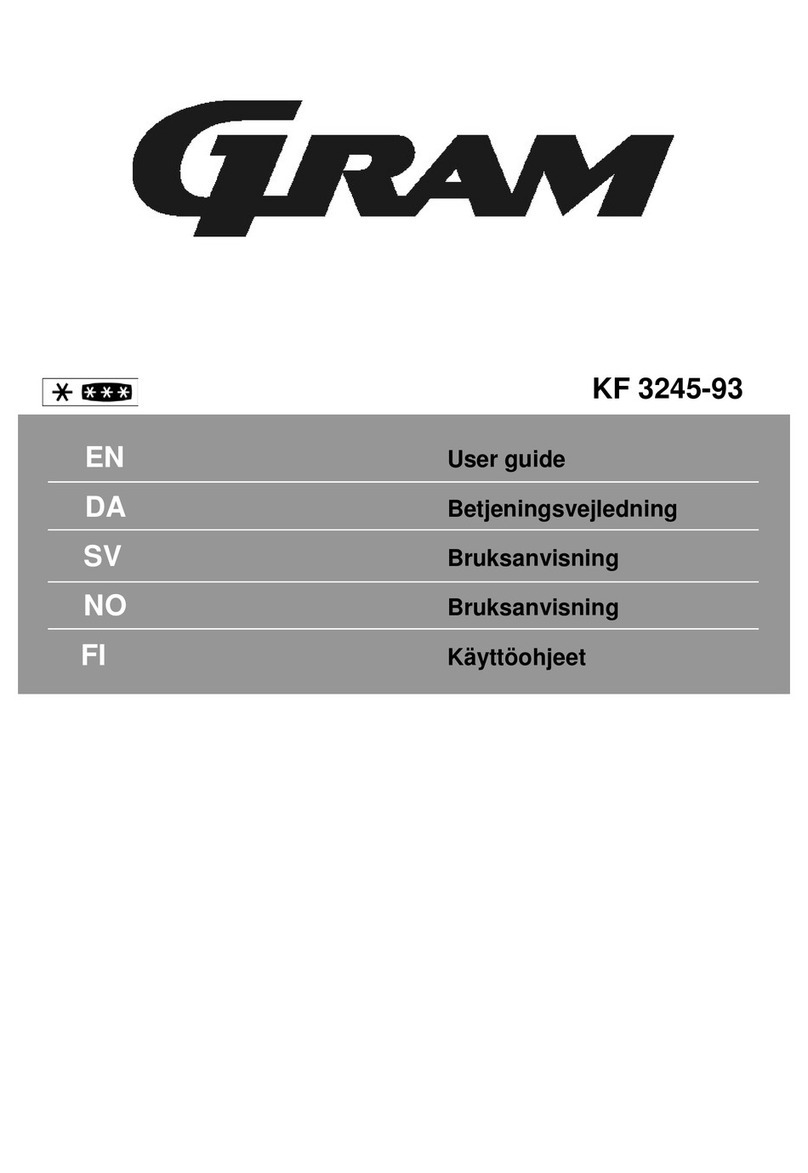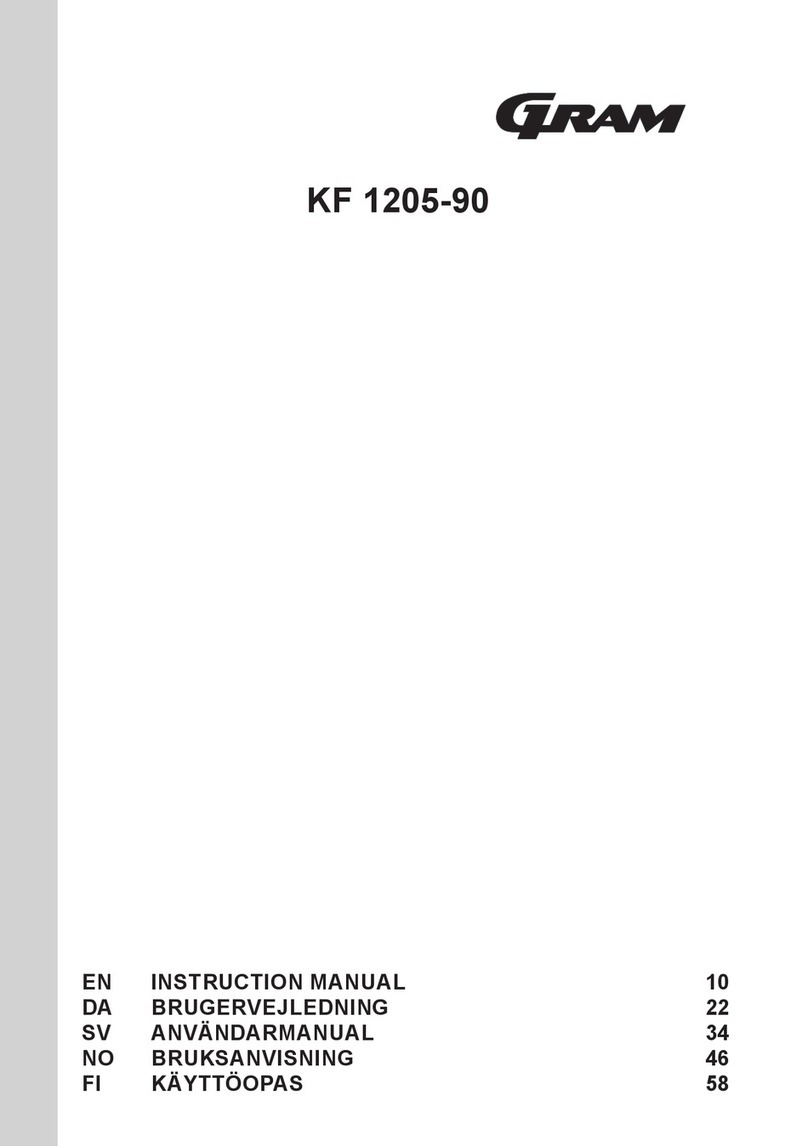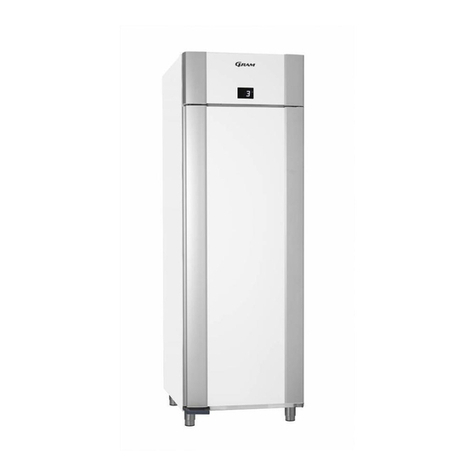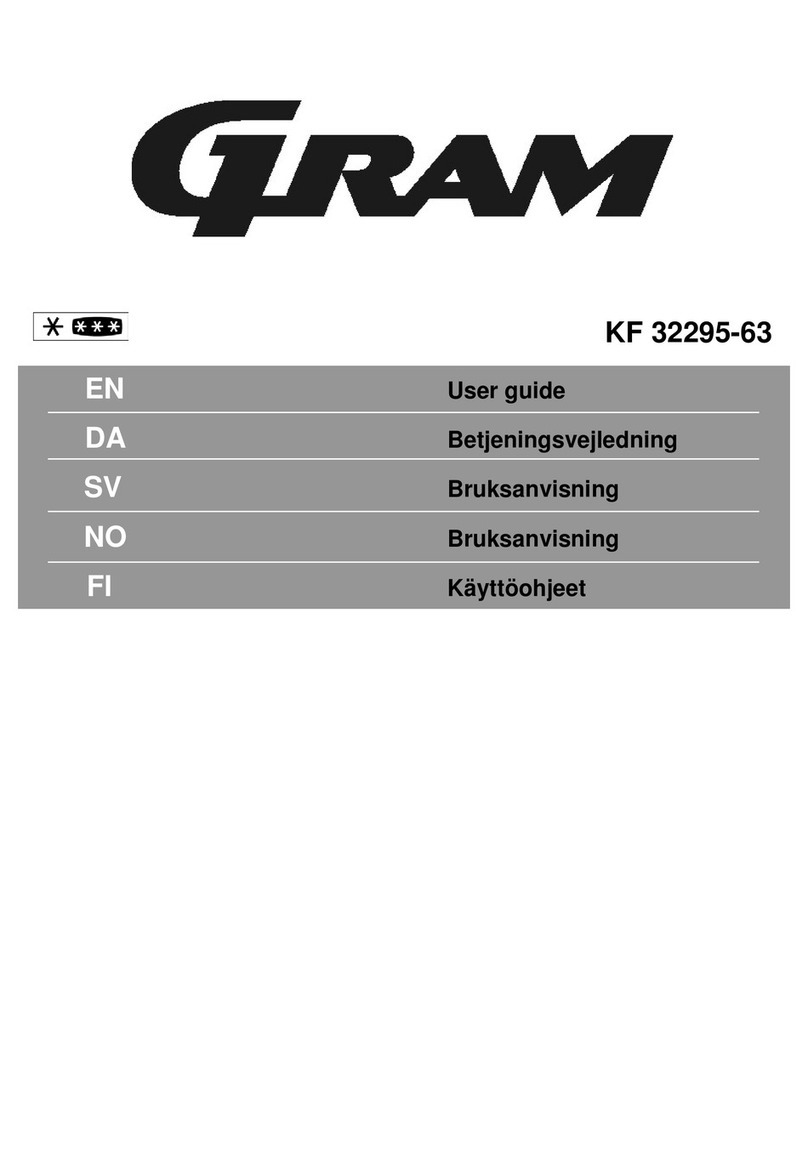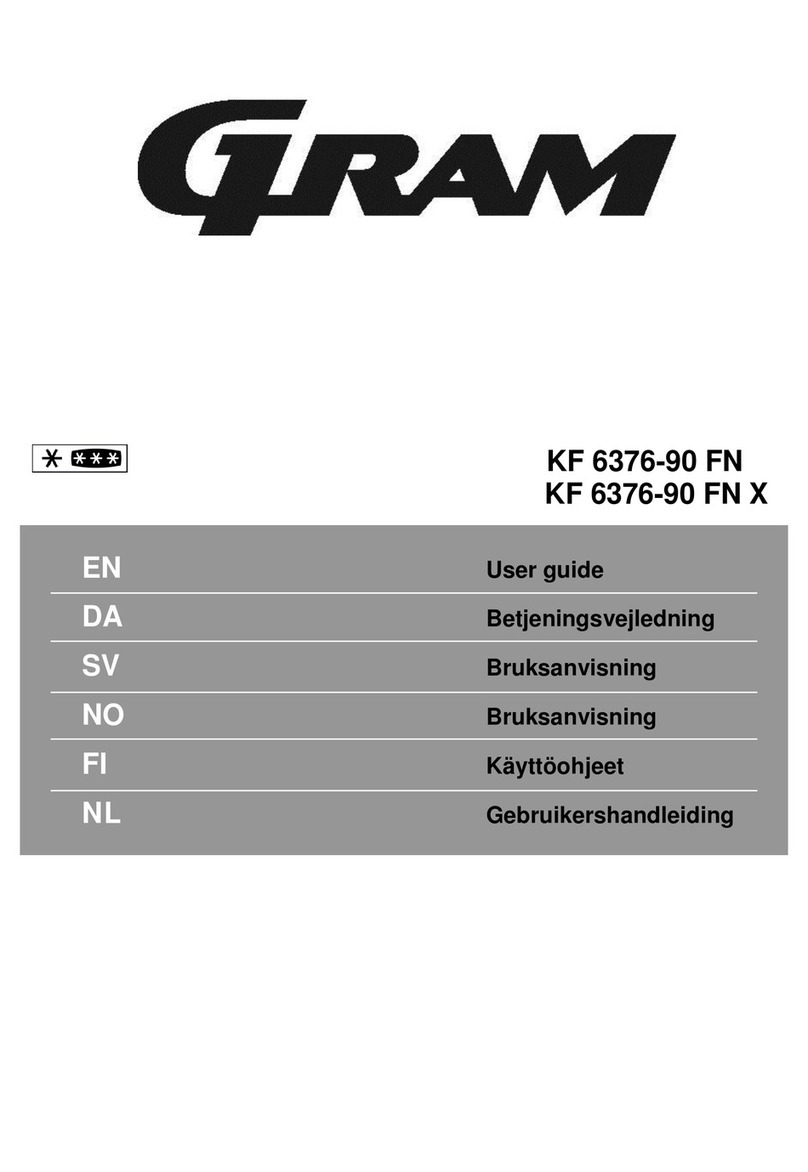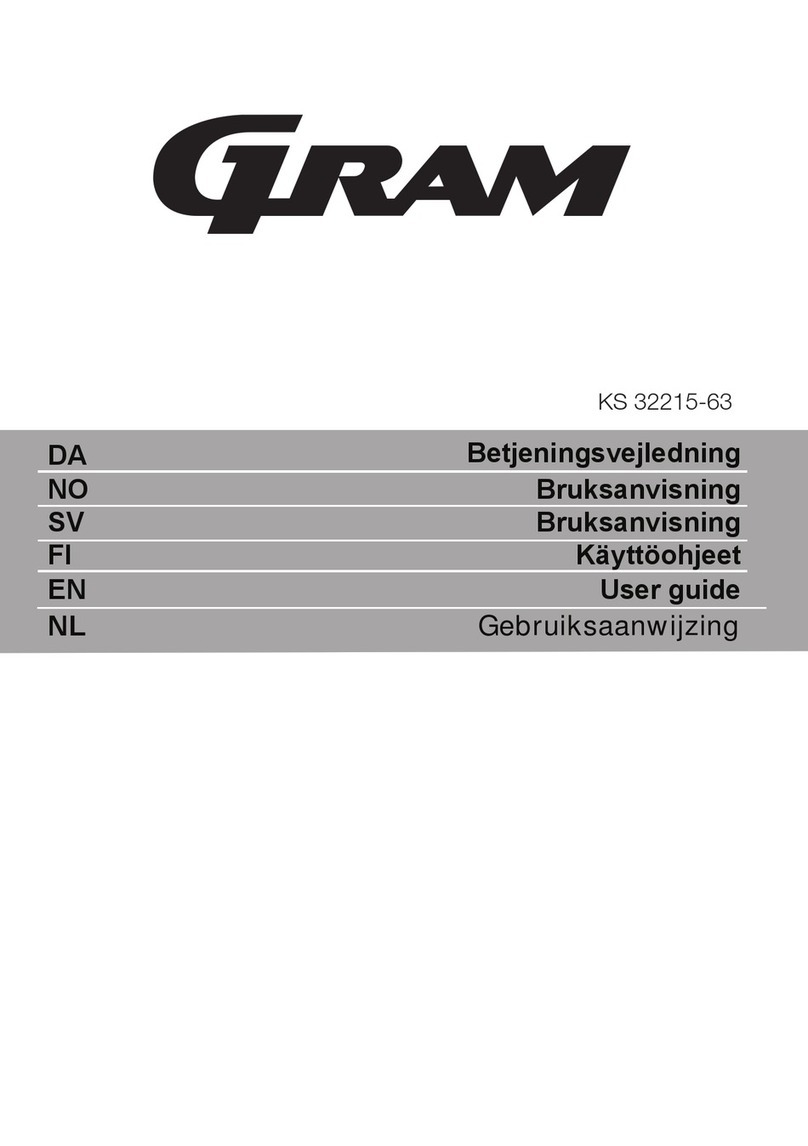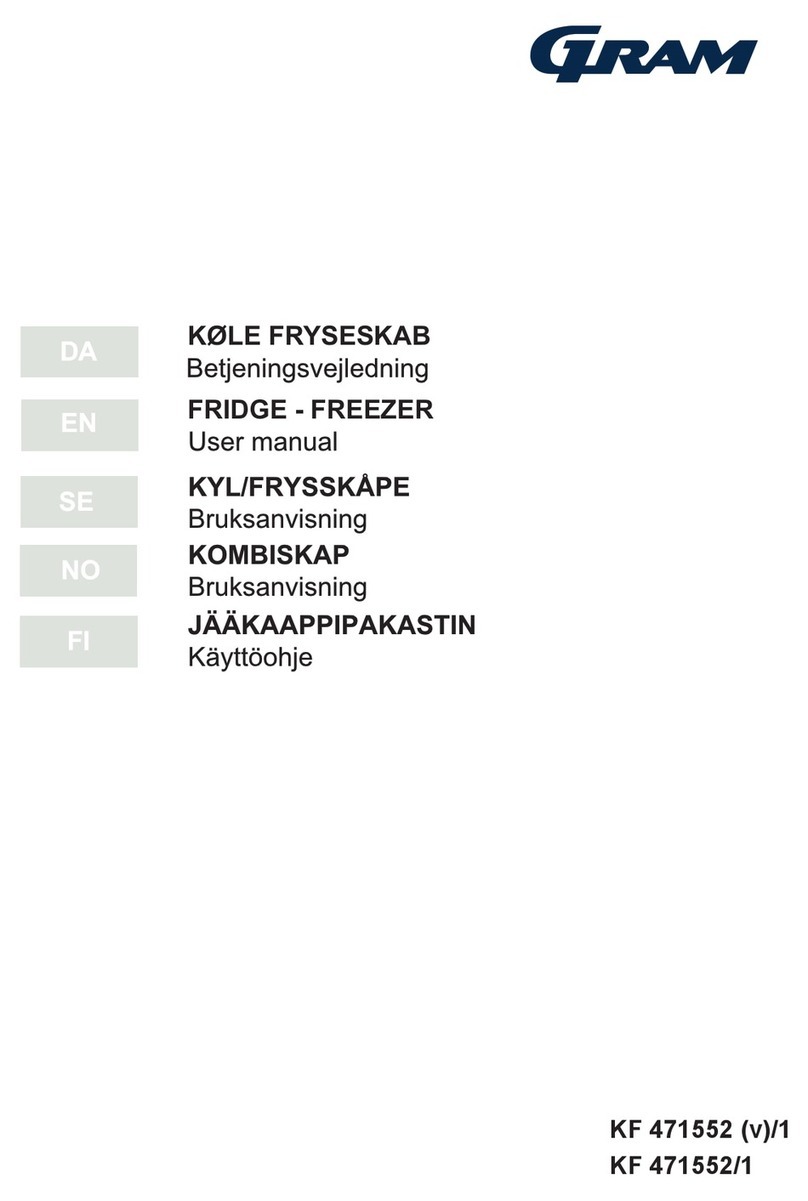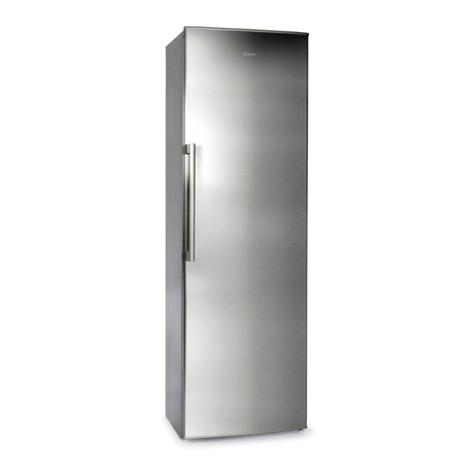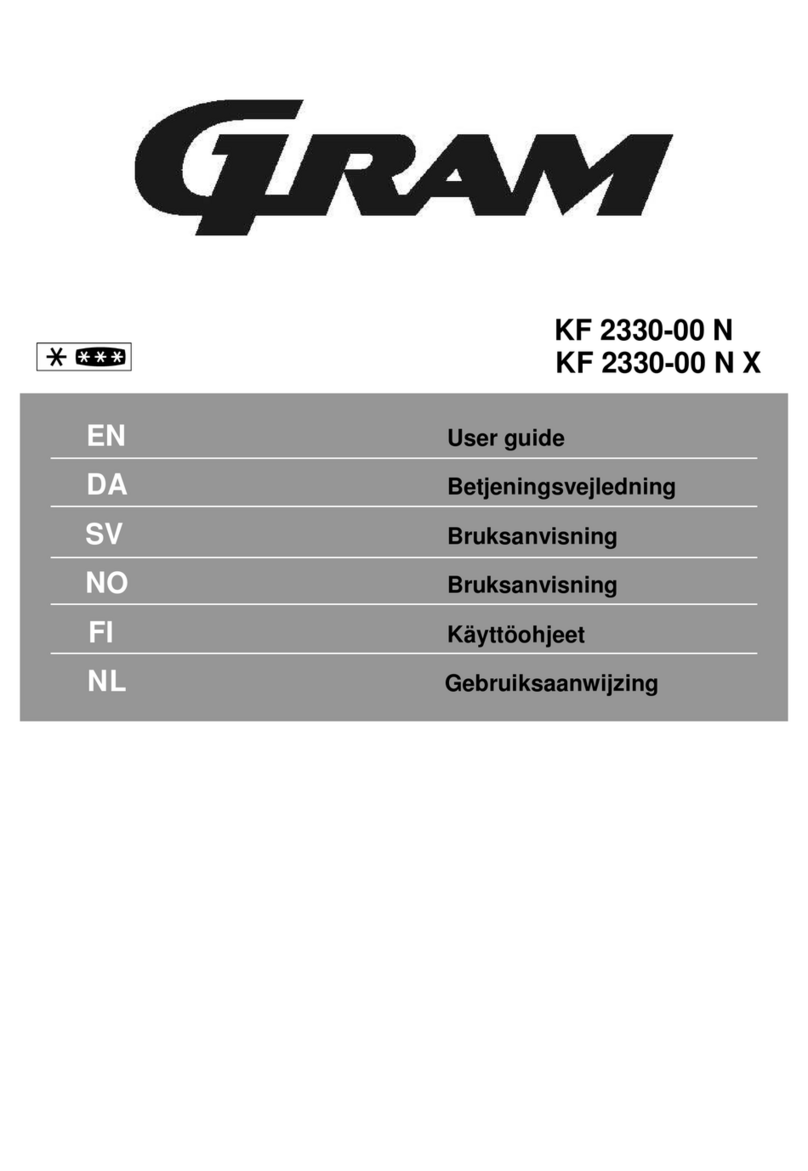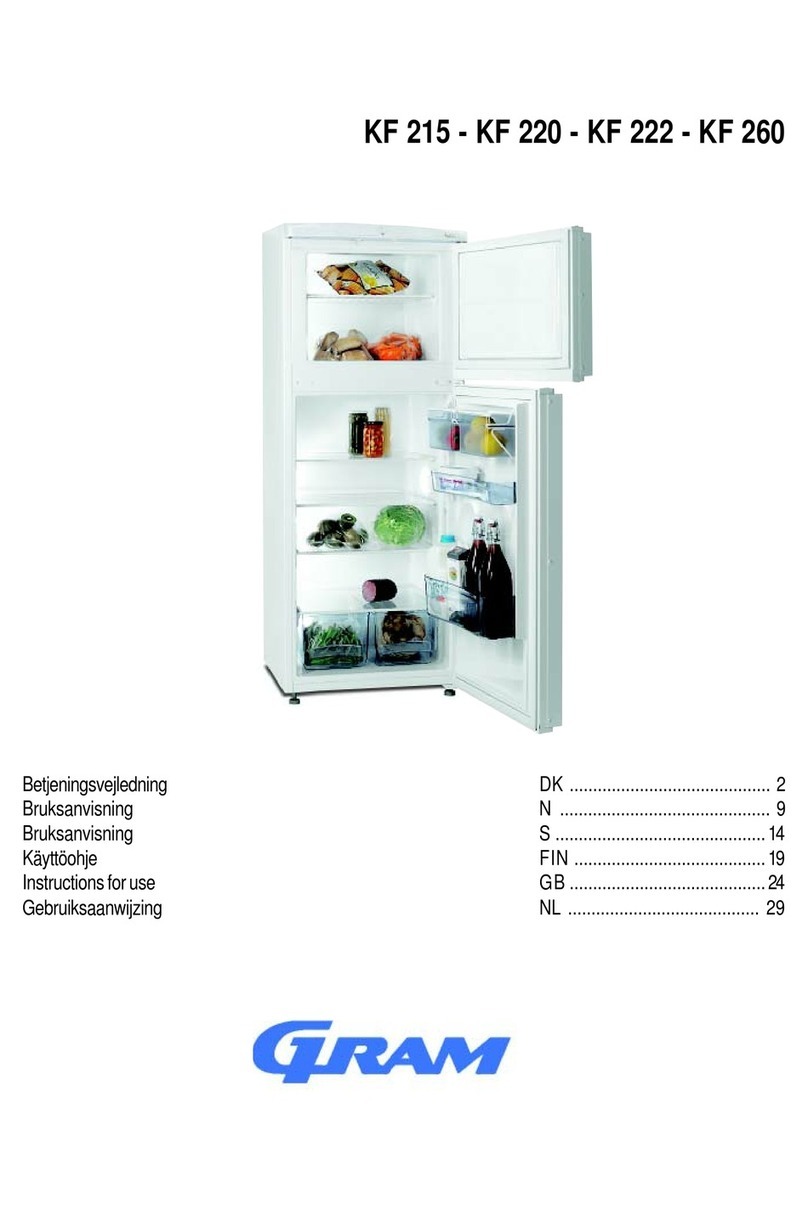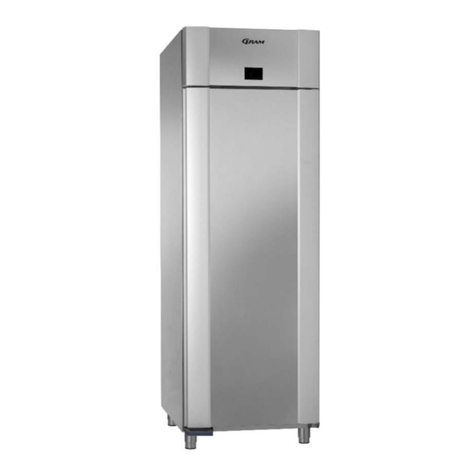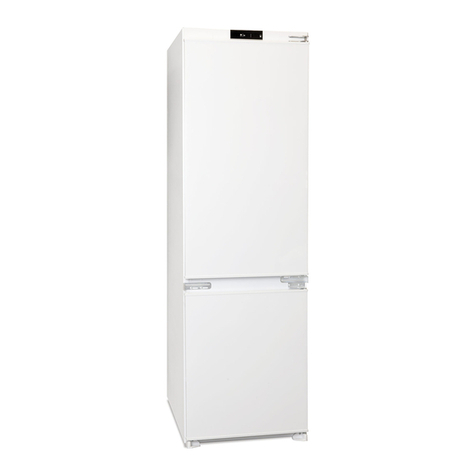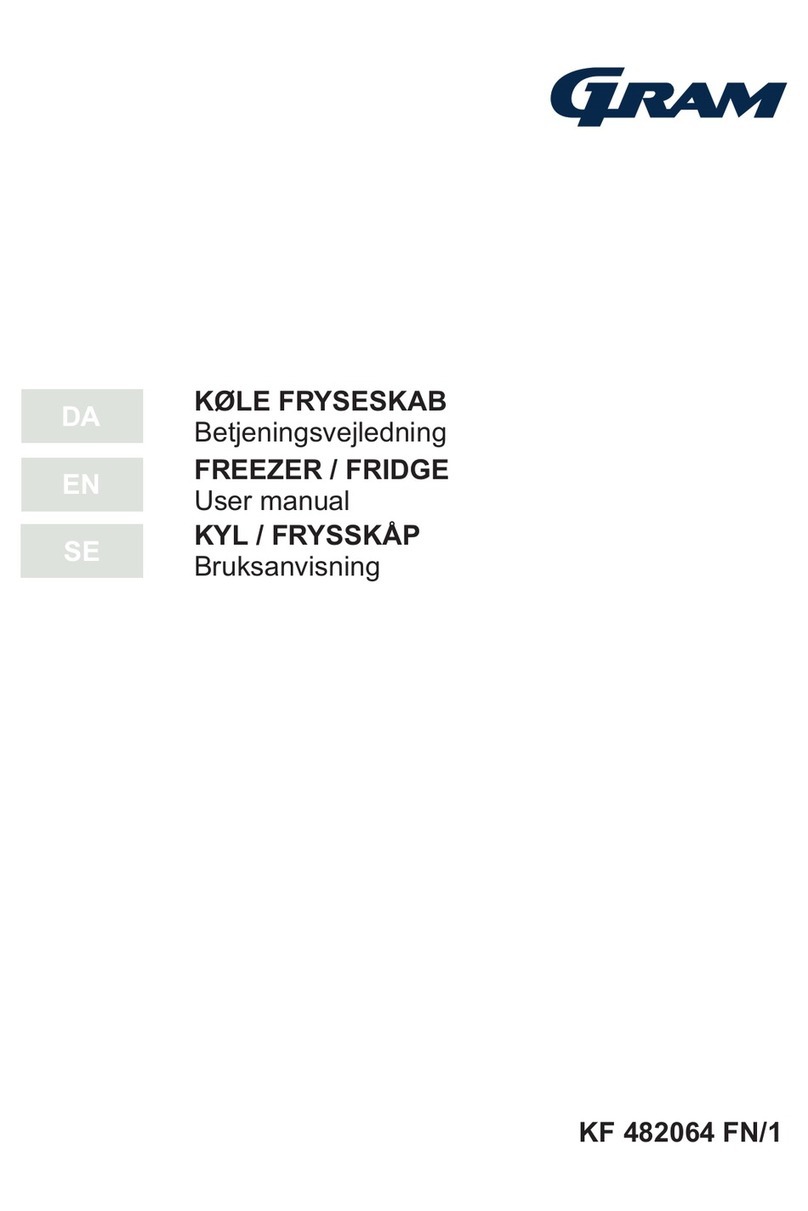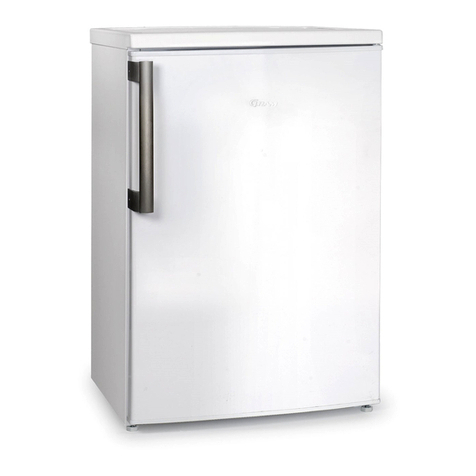8
SETTING UP AND INSTALLATION
Where to place the refrigerator
For safety reasons the refrigerator must not be installed outdoors; it
must be placed in a dry room. Never place the appliance close to
sources of heat such as cookers or radiators, and avoid placing it in
direct sunlight. The surface on which the appliance is placed must
be level and sturdy. The small wheels mounted at the rear of the
refrigerator make it easy to place it in the required position.
Important Note: The use of other gas appliances inside the
building, such as cook tops, ovens and heaters may create extra
moisture in the air, along with places that experience general high
humidity. This may cause the refrigerator/freezer to build up an
excess of ice on the evaporator plate causing the drip tray at the
back to overflow with water during the defrost process. To help
eliminate excess moisture, a dehumidifier or ventilation unit is
recommended.
The refrigerator can be set up free-standing against a wall or built
into a kitchen cabinet.
It is important that the appliance stands completely level and that
there is good air circulation over, under and around it. The
refrigerator can be adjusted by turning the two adjusting screws
on the plinth. After adjustment, the feet and the two rear wheels
must be in contact with the surface on which the appliance stands.
It is extremely important that the refrigerators adjustable feet are
set correctly to avoid movement or future distortion of the cabinet
(2 optional rear feet are supplied in the parts kit).
It is also advantageous, but not necessary, that the refrigerator is
tilted slightly towards the rear to allow the door to close on it’s
own.
The illustrations on the following pages (9 & 10), show how to
create sufficient air circulation around the cabinet. The dimensions
give the actual size of openings. The circulation area must be at
least 200 cm².

